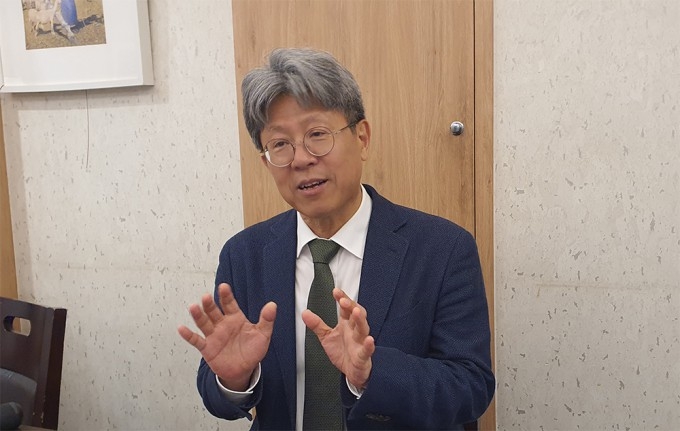![Park Jang-hyun, president of the Korea Astronomy and Space Science Institute, explains the major tasks of the Korea Astronomy and Space Science Institute at a press conference on the 10th. [Picture = Korea Astronomy and Space Science Institute]](https://static.beescdn.com/news.myworldfix.com/2025/06/20250611101422304.jpg?x-oss-process=image/auto-orient,1/quality,q_90/format,webp)
The Korea Astronomy and Space Science Institute will develop a Korean-style space telescope. Park Jang-hyun, director of the Korea Astronomy and Space Science Institute, who took office in January and finished organizing, expressed his ambition, saying, “We want to make the space telescope the brand of the Korea Astronomy and Space Science Institute.”
At a press conference held on the 10th, Director Park said, “We will launch a space telescope with 70% of domestic technology within five years.” The expected budget is 50 to 80 billion won, and although it is not large, it plans to introduce an upgraded form compared to the existing domestic space telescope.
Since the early 2000s, Korea has developed space telescopes by launching science and technology satellites. However, Director Park said, “Since science and technology satellites, we have not made any space telescopes,” adding, “Since domestic technology is sufficient
The space telescope to be developed by the Korea Astronomy and Space Science Institute is expected to be an optical space telescope. Space telescopes are divided into optics, radio waves, and high energy depending on the area of observation. Director Park said, “There is a high possibility that we will make the most impactful optical telescope.”
The reason Park put forward is the “space economy.” In order to raise the level of space-related technology and participate in the market, it is necessary to grow the industrial base through steady projects. Director Park said, “The level of domestic technology is sufficient, but there are not many projects to prove this, so we lack experience.”
Unlike general industrial technology, space technology must go through a separate verification process. Even if Korean companies have excellent technology in various fields such as semiconductors and batteries, they cannot dominate the space market unless they go through verification due to a lack of space industry foundation. Director Park said, “We need to establish an industrial base and verify technology through various space projects, including space telescopes.”
However, no specific roadmap or discussion has been conducted yet. Director Park said, “We will make and release a roadmap within this year and discuss it with the National Aeronautics and Space Administration.”
In recent years, space telescopes have been created in collaboration with various countries worldwide. SpearX, a space telescope launched in March, was also developed by the U.S. and South Korea. Nevertheless, when asked why Korea develops space telescopes with its own technology, Park stressed, “There is a lot left to develop on its own.”
“International cooperation is generally one-off, and nationally, there are only a few papers left,” he said. “It’s different to go into the board made by others and design and study from the bottom.”
Celebrating its 50th anniversary last year, the Korea Astronomy and Space Science Institute recently announced plans for the next 50 years. As Park is the first director in the next 50 years and the first director since the opening of the National Aeronautics and Space Administration, he plans to make major strategies for the Korea Astronomical Research Institute in the future. Recently, the in-house research organization, which had been separated by field, was divided by purpose and reorganized into the Basic Astronomy Research Center and the Space Exploration Research Center.
